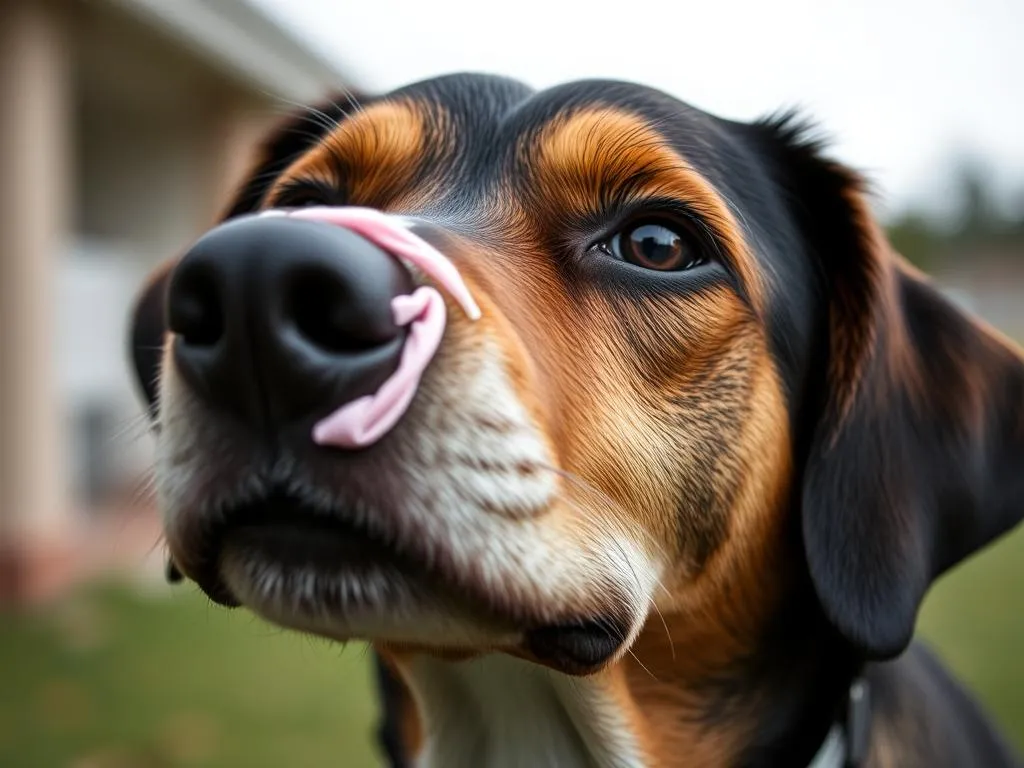
Introduction
Caring for a dog goes beyond regular feeding and grooming; it encompasses comprehensive health care, with a focus on understanding their specific needs. One common question that pet owners often ask is, “Can I put Vaseline on my dog’s nose?” This inquiry highlights the importance of recognizing and addressing the health issues that can affect our canine companions.
A dog’s nose plays a significant role in their overall well-being, impacting both their health and behavior. In this article, we will delve into the intricacies of dog nose health, explore the role of Vaseline, alternative remedies, and preventative care, and discuss when it might be necessary to consult a veterinarian.
Understanding Dog Nose Health
Anatomy of a Dog’s Nose
The structure of a dog’s nose is quite remarkable. It consists of various components, including the nasal passages, olfactory receptors, and the moist surface layer. The nose is essential for a dog’s sense of smell, which is far more acute than that of humans, allowing them to detect scents from miles away. This heightened sense of smell is crucial for many activities, including hunting, tracking, and even social interactions with other dogs.
Beyond its functional capabilities, a dog’s nose also serves as an important indicator of their overall health. Changes in the nose’s texture, color, or moisture level can signal underlying health issues that require attention.
Common Nose Conditions in Dogs
Several conditions can affect a dog’s nose, leading to problems such as:
- Dryness and Cracking: This is often caused by environmental factors, such as dry air or excessive sun exposure.
- Allergies and Irritations: Dogs can suffer from allergies that manifest in various forms, including nasal irritations.
- Infections and Other Health Issues: Bacterial and viral infections can also affect the nose, leading to more serious health concerns.
Signs of Nose Problems
As a responsible pet owner, it is crucial to monitor your dog’s nose for any changes. Symptoms to look for include:
- Bleeding: Any signs of blood on the nose or surrounding areas.
- Excessive Dryness: If the nose appears cracked or excessively dry.
- Discharge: Any unusual discharge, whether clear, colored, or foul-smelling.
If you observe any of these symptoms, it is advisable to consult a veterinarian promptly to ensure your dog receives the necessary care.
The Role of Vaseline in Dog Health
What is Vaseline?
Vaseline, also known as petroleum jelly, is a semi-solid mixture derived from oil. It has been used for decades in human health care for its moisturizing properties, helping to protect skin, soothe irritation, and provide a barrier against environmental factors.
Can I Put Vaseline on My Dog’s Nose?
The question of whether I can put Vaseline on my dog’s nose is a common one, particularly among dog owners looking for immediate relief for their pets. The good news is that using Vaseline on a dog’s nose can be safe and potentially beneficial for moisturizing dry or cracked skin.
However, there are important considerations:
- Safety: Vaseline is generally safe for topical application on a dog’s nose. It can help seal in moisture, reduce cracking, and provide a protective barrier against the elements.
- Potential Risks: The primary concern with using Vaseline is the risk of ingestion. If a dog licks its nose after application, it may ingest the petroleum jelly, which could lead to gastrointestinal upset. Additionally, some dogs may have skin sensitivities or allergies that could result in adverse reactions.
Alternative Remedies for Dog Nose Care
If you are hesitant about using Vaseline, several alternative remedies can effectively care for your dog’s nose:
- Natural Oils: Coconut oil and olive oil are excellent natural moisturizers. These oils can be safely applied to your dog’s nose and may provide additional health benefits, such as antimicrobial properties.
- Commercial Nose Balms: There are various specially formulated nose balms available for dogs. These products are designed to be safe for dogs and often contain natural ingredients that promote healing and moisture retention.
- When to Use Alternatives: If your dog has a known sensitivity to petroleum products, or if you prefer a more natural approach, consider using these alternatives instead of Vaseline.
How to Apply Vaseline (If Recommended)
Preparing Your Dog
Before applying Vaseline, ensure that your dog is calm and comfortable. Here are some steps to prepare:
- Create a Relaxing Environment: Choose a quiet space free from distractions.
- Comfort Your Dog: Speak soothingly to your dog, offering treats or toys to keep them at ease.
- Clean the Nose Area: Gently wipe your dog’s nose with a damp cloth to remove any dirt or debris.
Application Process
Once your dog is prepared, follow these steps to apply Vaseline safely:
- Use Clean Hands: Always wash your hands before handling your dog to prevent transferring any harmful substances.
- Apply a Small Amount: Use your fingertip to scoop a small amount of Vaseline.
- Gently Rub It In: Apply the Vaseline to your dog’s nose, ensuring even coverage without over-applying. Be gentle to avoid startling your pet.
- Monitor Your Dog: After application, keep an eye on your dog to ensure they do not excessively lick their nose or show signs of discomfort.
Aftercare
After applying Vaseline, observe your dog for any adverse reactions:
- Watch for Licking: If your dog begins to lick its nose excessively, consider redirecting its attention with a toy or treat.
- Check for Reactions: Keep an eye out for any signs of irritation, such as redness or swelling. If these occur, discontinue use and consult your veterinarian.
Preventative Care for Your Dog’s Nose
Regular Nose Checks
Routine checks of your dog’s nose are essential for maintaining health. Here’s how to perform a simple nose health check:
- Visual Inspection: Look for any changes in color, texture, or moisture level.
- Feel for Cracks: Gently run your fingers over your dog’s nose to feel for any cracks or rough patches.
- Assess Behavior: Note any changes in behavior that might indicate discomfort or irritation.
Environmental Considerations
Environmental factors can significantly impact a dog’s nose health. Here are some tips to protect your dog’s nose:
- Avoid Harsh Conditions: During extreme weather, such as high heat or cold winds, limit your dog’s outdoor exposure. Consider applying protective balms.
- Watch for Allergens: If your dog has allergies, be mindful of environmental triggers like pollen, dust, and chemicals.
Nutrition and Hydration
A dog’s diet plays a crucial role in overall health, including skin and nose health. Here’s how nutrition impacts your dog:
- Balanced Diet: Ensure your dog is receiving a balanced diet rich in vitamins and minerals, which supports skin health.
- Hydration: Keep your dog well-hydrated to help maintain moisture in their skin and nose.
When to Consult a Veterinarian
Recognizing Serious Symptoms
Some symptoms warrant immediate veterinary attention. These include:
- Persistent Bleeding: If your dog’s nose bleeds and does not stop quickly.
- Severe Cracks or Lesions: Deep wounds or persistent cracks that do not heal.
- Excessive Discharge: Foul-smelling or discolored discharge.
Early intervention can make a significant difference in treatment outcomes, so do not hesitate to reach out to your veterinarian if you notice concerning signs.
Regular Veterinary Check-Ups
Routine veterinary visits are essential for monitoring your dog’s health. It is generally recommended to schedule annual check-ups, but senior dogs or those with chronic conditions may require more frequent visits. During these check-ups, your veterinarian will assess your dog’s overall health, including their nose, to catch any potential issues early on.
Conclusion
In summary, taking care of your dog’s nose is an integral part of their overall health care. While the question, “Can I put Vaseline on my dog’s nose?” has a generally positive answer, it is important to consider safety and potential risks. Regular checks, environmental considerations, and proper nutrition are key to maintaining nose health.
As a devoted pet owner, staying informed and proactive about your dog’s health needs will help ensure their well-being for years to come. When in doubt, do not hesitate to seek professional advice from a veterinarian to keep your furry friend happy and healthy.









